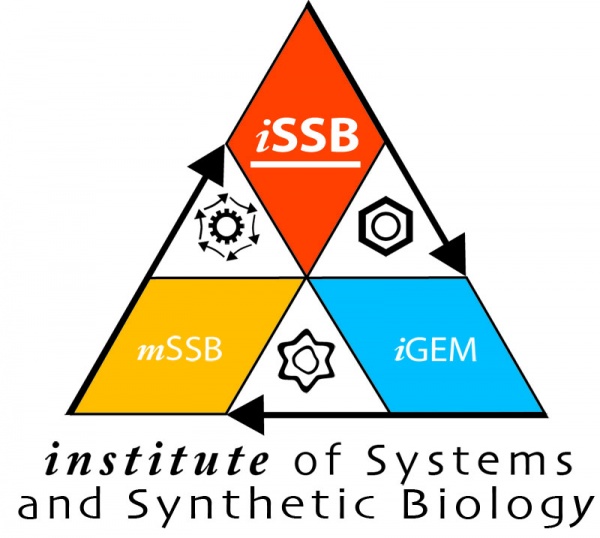Team:Evry/Protocols/07
From 2013.igem.org
m |
|||
| (11 intermediate revisions not shown) | |||
| Line 9: | Line 9: | ||
<h1> Polymerase Chain Reaction </h1> | <h1> Polymerase Chain Reaction </h1> | ||
| + | <h2>Principle</h2> | ||
| + | <div style="float:right"> | ||
| + | <div class="thumb tnone" style="margin-left:20px;"> | ||
| + | <div class="thumbinner" style="width:252px;" > | ||
| + | <a href="https://static.igem.org/mediawiki/2013/5/5e/PCR.png" class="image"> | ||
| + | <img alt="PCR" src="https://static.igem.org/mediawiki/2013/5/5e/PCR.png" width="250px;" class="thumbimage" /> | ||
| + | </a> | ||
| + | <div class="thumbcaption"> | ||
| + | <div class="magnify"> | ||
| + | <a href="https://static.igem.org/mediawiki/2013/5/5e/PCR.png" class="internal" title="Enlarge"> | ||
| + | <img src="/wiki/skins/common/images/magnify-clip.png" width="15" height="11" alt="" /> | ||
| + | </a> | ||
| + | </div> | ||
| + | <center> Figure 1: PCR principle.</center> | ||
| + | </div> | ||
| + | </div> | ||
| + | </div> | ||
| + | </div> | ||
| - | |||
| - | |||
<p>Polymerase Chain Reaction (PCR) is a molecular biology method used to amplify a small amount of genetic material (DNA or RNA), using specific primers of a target sequence. <br/> | <p>Polymerase Chain Reaction (PCR) is a molecular biology method used to amplify a small amount of genetic material (DNA or RNA), using specific primers of a target sequence. <br/> | ||
| - | PCR is divided into 5 steps:< | + | PCR is divided into 5 steps: |
| - | + | <ol> | |
| - | + | <li>First denaturation: | |
| - | + | <li>Denaturation step | |
| - | + | <li>Annealing step | |
| - | + | <li>Elongation step | |
| + | <li>Final step | ||
| + | </ol> | ||
The 2nd, 3th and 4th steps are repeated 20-40 cycles.<br/></p> | The 2nd, 3th and 4th steps are repeated 20-40 cycles.<br/></p> | ||
| Line 32: | Line 50: | ||
<h3>Mixture preparation</h3> | <h3>Mixture preparation</h3> | ||
| - | <p>We use two differents polymerase for our PCR: Taq Polymerase and | + | <p>We use two differents polymerase for our PCR: Taq Polymerase and Q<small><sub>5</sub></small>.<br/> |
| - | As | + | As Q<small><sub>5</sub></small> is a hight fidelity polymerase, we use it to obtain sequences without mutation (for a total of 50 μL of mixture); otherwise we use Taq Polymerase instead (for a total of 25 μL of mixture).<br/> |
| - | Afterwards, we will describe the protocol for a PCR with | + | Afterwards, we will describe the protocol for a PCR with Q<small><sub>5</sub></small> (total amount: 50 μL).<br/> |
| - | <i>Note | + | <i><b><small>Note: Proportion are the same with Taq Polymerase, for 25 μL or 50 μL: 1:10 of each primer, 1:5 of Buffer, 1:50 of dNTPs, 1:50 of genomic DNA and 1:100 of polymerase</small></b></i><br/><br/> |
Make tubes with 5 μL (1:10) of Forward primer and 5 μL (1:10) of Reverse primer for each desidered sequence.<br/> | Make tubes with 5 μL (1:10) of Forward primer and 5 μL (1:10) of Reverse primer for each desidered sequence.<br/> | ||
For positive and negative controle, use primers that worked previously in the same condition of PCR.<br/> | For positive and negative controle, use primers that worked previously in the same condition of PCR.<br/> | ||
| Line 43: | Line 61: | ||
For n tubes, prepare a master mix with the following solutions: | For n tubes, prepare a master mix with the following solutions: | ||
<ul> | <ul> | ||
| - | <li> (n+1) x 10 μL of | + | <li> (n+1) x 10 μL of Q<small><sub>5</sub></small> Buffer |
<li>(n+1) x 1 μL of dNTPs | <li>(n+1) x 1 μL of dNTPs | ||
<li> (n+1) x 27,5 μL of distilled water. | <li> (n+1) x 27,5 μL of distilled water. | ||
| - | <li> (n+1) x 0,5 μL of | + | <li> (n+1) x 0,5 μL of Q<small><sub>5</sub></small> |
</ul> | </ul> | ||
| - | <i>Note | + | <p><i><small><b>Note: Take the enzyme out of -20°C just before utilisation.</b></small></i><br/><br/> |
| - | Split 39 μL of the master mix in each tube. | + | Split 39 μL of the master mix in each tube.<br/> |
Add 1 μL of genomic DNA in each tube, except in your negative controle tube. In this one, put 1 μL of distilled water instead.<br/> </p> | Add 1 μL of genomic DNA in each tube, except in your negative controle tube. In this one, put 1 μL of distilled water instead.<br/> </p> | ||
Put your tubes into Thermo Cycler. | Put your tubes into Thermo Cycler. | ||
| + | </p> | ||
<h3>PCR Cycles</h3> | <h3>PCR Cycles</h3> | ||
| + | <p>Set the following program on your Thermo Cycler:</p> | ||
| + | <ol> | ||
| + | <li>First denaturation: 30 seconds at 98°C | ||
| + | <li>Denaturation step 10 seconds at 98°C | ||
| + | <li>Annealing step 20 seconds at 56°C | ||
| + | <li>Elongation step (n+1) minutes at 72°C (<i>as n is the number of kB of your sequence</i>) | ||
| + | <li>Final step 5 minutes at 72°C | ||
| + | </ol> | ||
| + | <p>Steps 2, 3 and 4 are repeated 29 times.</br> | ||
| + | Then let the mixture cool down at 4°C.<br/> | ||
| + | <i><b><small>Note: Annealing temperature depend on your primers and elongation temperature on the polymerase used.</b></small></i></p> | ||
| - | |||
<h2> Optimisation</h2> | <h2> Optimisation</h2> | ||
<h3> Number of primer</h3> | <h3> Number of primer</h3> | ||
Latest revision as of 09:12, 5 September 2013
Polymerase Chain Reaction
Principle
Polymerase Chain Reaction (PCR) is a molecular biology method used to amplify a small amount of genetic material (DNA or RNA), using specific primers of a target sequence.
PCR is divided into 5 steps:
- First denaturation:
- Denaturation step
- Annealing step
- Elongation step
- Final step
Denaturation step occure between 94 and 98°C.The heat breaks the hydrogen bonds and then causes the separation of the double strand of DNA into two single strands.
Annealing step occure between 50 and 65 °C. Primers anneals to DNA simple strand by complementarity of the nitrogenized bases.
Elongation step occure between 70 and 80°C, depending on the DNA polymerase used. The polymerase synthesizes a new DNA strand complementary to the DNA template
Preparation
Mixture preparation
We use two differents polymerase for our PCR: Taq Polymerase and Q5.
As Q5 is a hight fidelity polymerase, we use it to obtain sequences without mutation (for a total of 50 μL of mixture); otherwise we use Taq Polymerase instead (for a total of 25 μL of mixture).
Afterwards, we will describe the protocol for a PCR with Q5 (total amount: 50 μL).
Note: Proportion are the same with Taq Polymerase, for 25 μL or 50 μL: 1:10 of each primer, 1:5 of Buffer, 1:50 of dNTPs, 1:50 of genomic DNA and 1:100 of polymerase
Make tubes with 5 μL (1:10) of Forward primer and 5 μL (1:10) of Reverse primer for each desidered sequence.
For positive and negative controle, use primers that worked previously in the same condition of PCR.
We use primers (Primers 009 and 010) for pEntC for ou controles.
For more details about our primers, see the corresponding page.
For n tubes, prepare a master mix with the following solutions:
- (n+1) x 10 μL of Q5 Buffer
- (n+1) x 1 μL of dNTPs
- (n+1) x 27,5 μL of distilled water.
- (n+1) x 0,5 μL of Q5
Note: Take the enzyme out of -20°C just before utilisation.
Split 39 μL of the master mix in each tube.
Add 1 μL of genomic DNA in each tube, except in your negative controle tube. In this one, put 1 μL of distilled water instead.
PCR Cycles
Set the following program on your Thermo Cycler:
- First denaturation: 30 seconds at 98°C
- Denaturation step 10 seconds at 98°C
- Annealing step 20 seconds at 56°C
- Elongation step (n+1) minutes at 72°C (as n is the number of kB of your sequence)
- Final step 5 minutes at 72°C
Steps 2, 3 and 4 are repeated 29 times.
Then let the mixture cool down at 4°C.
Note: Annealing temperature depend on your primers and elongation temperature on the polymerase used.
Optimisation
Number of primer
Temperature
Gel electrophoresis analysis
Principle
Electrophoresis is a method using electrical field to separate DNA or RNA sequence by size. Smaller the fragment is, the more it migrates on the gel.
Using a DNA ladder, we can know the size of DNA sequence and then check if we have the sequence we wanted.
Preparation
Analysis
 "
"














